► Hybrid-only rival to XC60, Q5 and Evoque
► Bigger and roomier but also lighter
► Lexus promises more driving pleasure too
Whisper it, but Lexus is taking its most radical step yet. In its quiet, sophisticated way, Toyota’s upmarket brand has vowed to bring the ingredient that’s been missing from too many of its products in the past: decent driving dynamics.
There have usually been one or two exceptions in the line-up, such as the current LC. But the idea now is to ensure that every Lexus is a joy to drive – on top of the traditional virtues of comfort and reliability. And that starts with the newly unveiled second-generation NX. We’ve not driven it yet. But if it lives up to Lexus’s ambitions then it should stand out from the crowd, and not just with its sharp styling.
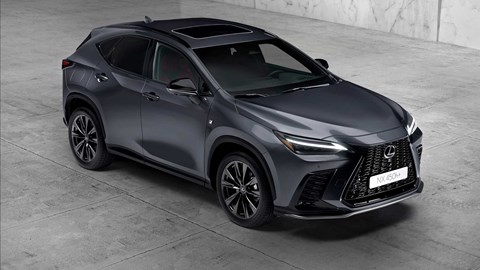
But it’s just another hybrid SUV, isn’t it?
Not quite, although you’ve put your finger on the key issue here. Lexus started off as a maker of refined saloons, but in recent years its most successful cars in Europe have been its SUVs, the UX, NX and RX. That’s left it struggling to claim a USP, at a time when most mainstream and premium manufacturers have focused on SUVs.
And although Lexus has been big on hybrids longer than most, that’s no longer enough, as everyone’s getting in on the act, not least key rival Volvo. And Lexus’s German-style premium approach has also been pickpocketed, notably by DS and Genesis.
The original NX, launched in 2014, has been a big success, selling 170,000 around Europe – with 70% of those buyers new to the brand. Now, in a bid to maintain that momentum, the second-generation model has been upgraded inside and out.
It’s the first Lexus plug-in hybrid, although a ‘self-charging’ (ie non-plug-in) version is also available.
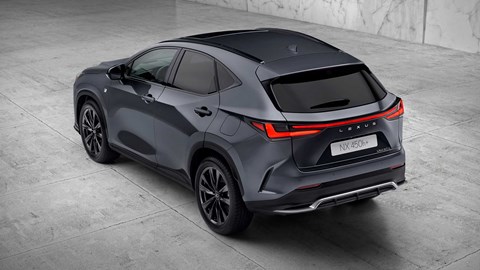
It gets a bold new version of the Lexus family nose – a style that will be copied by other Lexus newcomers.
And it gets a significant interior redesign and upgrade – including jettisoning the unloved touchpad infotainment controls, in favour of a touchscreen, physical buttons and voice control.
It’s due to arrive this autumn, with prices and UK spec details yet to be announced. But there’s plenty we do already know about it, with Lexus Europe boss Spiros Fotinos CAR’s personal guide to the new NX.
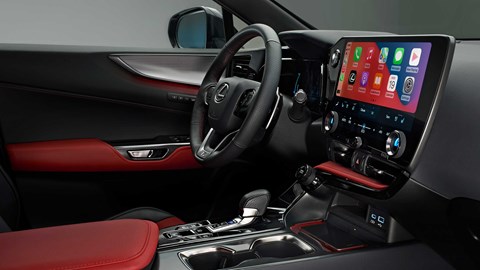
Now with track-honed dynamics
Lexus is at its best when it goes its own sweet way. It doesn’t deny that development work included comparisons with other cars in the same class – but it insists that the most important aim was to satisfy its own internal benchmark, which is calls Lexus Dynamic Signature. A slightly slippery concept, it’s perhaps best understood as a natural, intuitive feel.
In more concrete terms it involves a bunch of changes to the underlying GA-K platform; the NX’s front and rear tracks are wider, the suspension has been revised (still MacPherson struts up front and rear double wishbones with trailing arms), and the centre of gravity is now 20mm lower, with improved front-rear weight distribution. The development programme included much more focus on track work at Lexus’s Shimoyama facility, with professional racing drivers tasked with honing the steering and braking.
‘We did a good job originally and built very solid foundations on comfort, quietness, reliability, which we carry through to today,’ Fotinos told CAR. ‘We went through a second phase where we started to carve out a design identity, and now we’re moving into this next phase where we really want to dial up the fun. We’re not giving up what we’ve always done exceptionally well. But then focusing more on the driving enjoyment, driving engagement.’
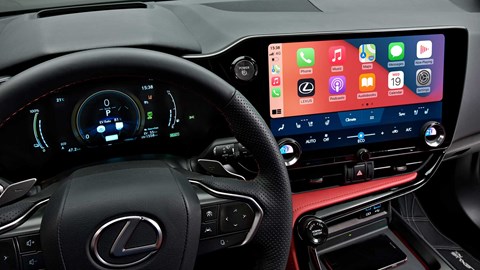
Key to the dynamic improvement is a more rigid body, its mix of steel and aluminium constructed using innovative techniques including laser peening and laser screw welding.
The renowned Lexus emphasis on getting the details right continues. For instance, a new twin-latch bonnet-locking mechanism adds rigidity and reduces vibration; the engine’s underside cover has a dimpled surface, creating micro-vortices to improve straight-line stability; and the door handles are flusher for a minute improvement in airflow.
Is this PHEV worth the wait?
Lexus is spectacularly late to market with its first plug-in hybrid. Why not sooner? Fotinos said: ‘For us as Lexus, bringing to market a PHEV, it had to be classy. You can’t credibly come from the history that we have on hybrid and not bring a PHEV to market that is not one level up in the segment.’ The combination of the current fourth-generation hybrid system, the new 2.5-litre engine, the chassis weight reduction and recent improvements in battery efficiency combined to add up to a PHEV that was, he said, ‘a real evolution from the core hybrid technology’.
The system available on the NX is broadly similar to that in the PHEV version of the Toyota RAV4. A 18.1kWh battery sits under the passenger compartment and powers an electric motor on the rear axle, giving full-time all-wheel drive. System output of the PHEV version, called NX 450h+, is 302bhp, with a 0-62mph time of just over 6.0sec.
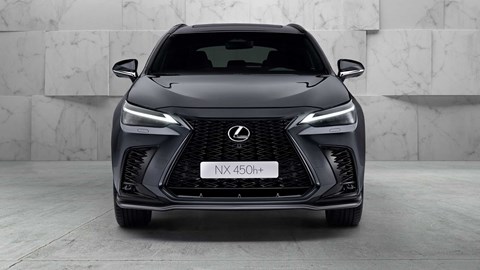
It can run for almost 40 miles in electric-only mode, or at up to 84mph if you’re prepared to sacrifice some distance. But the clever bit is that when the underfloor battery runs out of charge, the NX doesn’t (unlike many rivals) become a slightly overweight petrol-engined car. Instead, it defaults to being a classic Toyota self-charging hybrid, with the front wheels driven by a mixture of petrol engine and regen electricity.
Fotinos said: ‘What does a trip cost, in our car versus our competitors? Not just the “free” part, the range part, but in real-life usage of the vehicle. That was important to us.’
The other version that will come to the UK is the NX 350h, a non-plug-hybrid. Compared to the outgoing equivalent, power is up by 22% to 239bhp, emissions and fuel consumption down by about 10%, 0-62mph in 7.7sec. That will be available with front- or all-wheel drive.
What else is special?
The new car’s styling has been led by the grille – a look that will appear on other Lexus models. The wheelarches are more pronounced, the lighting goes all the way across the rear, and the rear ‘L’ logo is replaced by the word LEXUS.
Inside the changes are bigger. It’s roomier, particularly for back-seat passengers, who are the main beneficiaries of the overall length increasing by 20mm, wheelbase by 30mm, width by 20mm and height by 5mm.
And the NX is the first car to get the new Lexus infotainment system, which ditches the fiddly old set-up and introduces a 14 or 9.8-inch touchscreen (depending on spec), a ‘Hey Lexus’ voice control system, and logical clustering of physical buttons. A head-up display is optional.
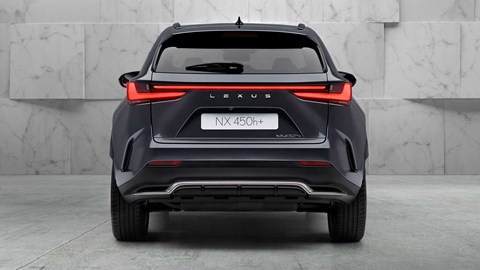
Although computer modelling did most of the design heavy lifting, Lexus insists there’s no susbstitute for the human hand, eye and ear in finessing the details; for instance the size, postioning and materials used for the gearlever and steering wheel were painstakingly optimised by actual humans.
The powered tailgate opening and closing time has been halved, to around four seconds. And the doors have a new electronic release system, replacing the internal handle with a button. Working in conjunction with the blind-spot warning system, you’re physically prevented from opening a door into the path of an approaching two-wheeler.
So what’s next?
‘The expansion of electrification,’ said Fotinos. ‘We’ve taken a first step now with the addition of our first plug-in hybrid. We’ve already announced that next year we’re coming with a dedicated EV.’
As Lexus moves to fulfil its promise of introducing at least 10 new electrified vehicles by 2025 – including battery-electric, hybrid and plug-in hybrid – it will also be heading into new territory in terms of sizes and styles, trying to stay in tune with a fast-evolving European market.
‘We’re looking at segments where currently we’re not competing, and then prioritsing those segments, looking up and down, where we want to enter the market, because that’s where our consumer base is headed.’